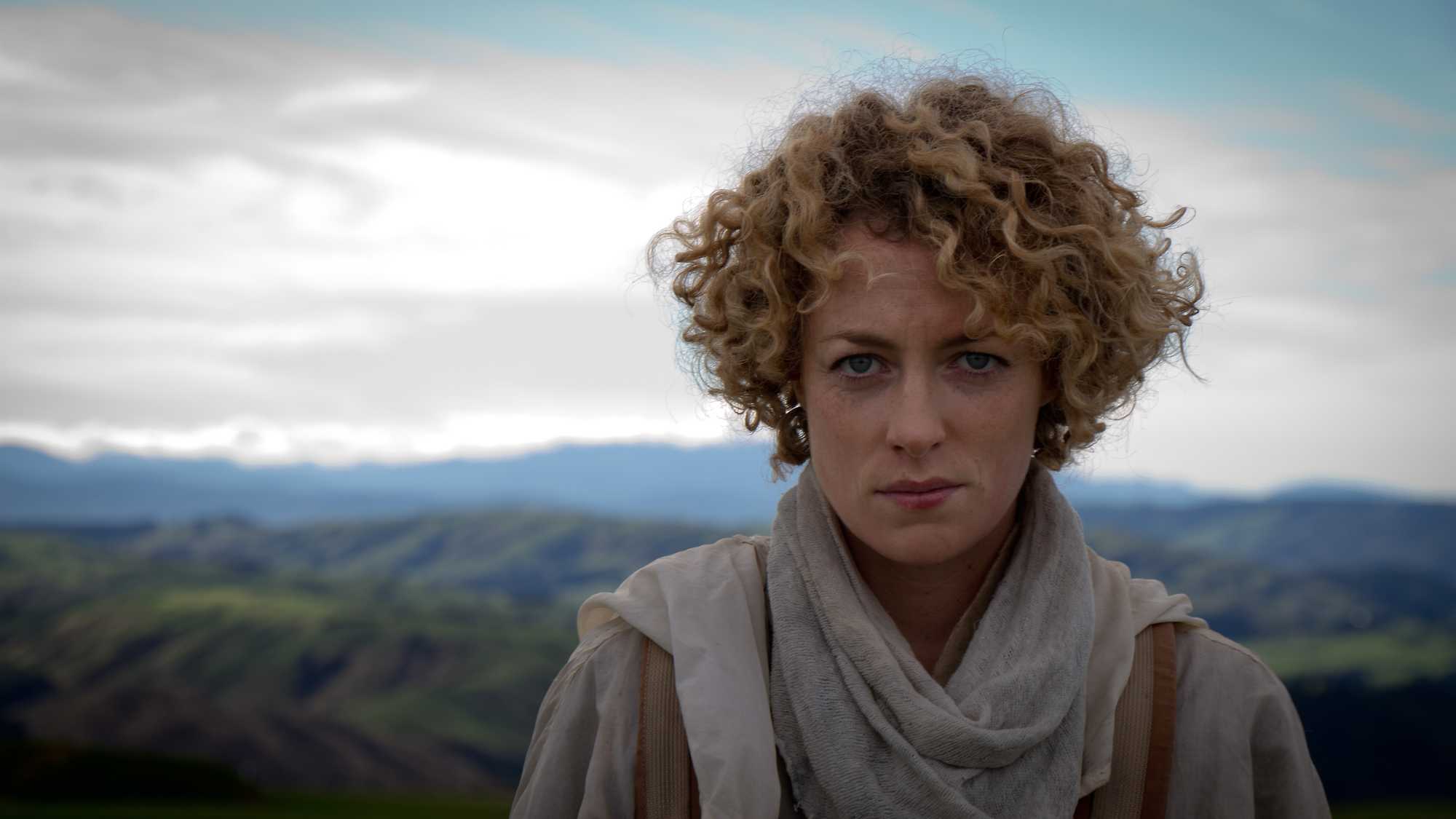Shot on the spectacular hills overlooking Cook Strait, Juliet Bergh’s salvagepunk Western set in a post-apocalyptic future is the first fruit of the Film Commission’s low-budget Escalator scheme. Starring Loren Taylor.

With a bit of imagination Wellington became a post-apocalyptic world where civilisation is not destroyed by a sudden catastrophic event but by insidious decay.
Screened as part of NZIFF 2012
Existence 2012
The first visible product of the New Zealand Film Commission’s Escalator scheme, Existence, aptly characterised by its producers as a “salvagepunk Western set in a post-apocalyptic future”, has less of a video-store vibe about it than you might imagine. Director and co-writer Juliet Bergh privileges allusion, mythic imagery and densely constructed atmosphere over the usual narrative tropes, and sinks us into the existential dread of an exhausted world. On the treeless, windswept hills overlooking Cook Strait, the sparse remnants of humanity cower in ignorance, bounded by a toxic sea and a seemingly arbitrary fence patrolled by armed horsemen. Loren Taylor is Freya, trapped with her family and a few inscrutable (to them) remnants of life as we currently know it. Refusing to submit to the law hammered home by her severely disapproving father-in-law, she oversteps the boundaries of her existence and, Pandora-like, seeks forbidden knowledge. — BG
“Existence is a story that grew out of the landscape near my home in Wellington. The maritime weather pattern batters these big open landscapes offering a rich environment for the imagination. It is wild, desolate and shadows the city as if to declare itself as the true identity of Wellington. It offers up wind turbines, isolated coastlines, abandoned WW2 bunkers – all these elements that were just sitting there waiting for someone to create a story from them…
Existence was inspired by a salvagepunk Western aesthetic – a hybrid that was conceived to help meet the challenge of low-budget filmmaking. Salvagepunk is a post-apocalyptic vision of the future developed by theorist Evan Calder Williams (author of Combined and Uneven Apocalypse) and poetically described by him as 'a graveyard smile'. This is an image that has stuck with me as an incredibly poignant image of futile hope. The salvagepunk concept provided a template for key creatives on which to base the tone and vision of the film. The aesthetic takes a minimalistic and idiosyncratic reinterpretation of discarded objects that makes the familiar unfamiliar. The knack of making do with what you've got is what gives this film its unique quality. This inventiveness resonates with the number-eight-wire mentality that is the ingenuity of New Zealand filmmakers.” — Juliet Bergh